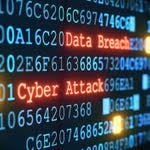The Dark Side of Connectivity Hackers, Malware, and the Fatal Consequences of Cyberattacks.
Cyberspace is increasingly becoming a dangerous frontier. The headlines scream with increasing frequency of cyberattacks, data breaches, hacks, and data leaks, painting a stark picture: we are all potential targets. Hackers, armed with sophisticated tools and a relentless drive, are exploiting vulnerabilities both technical and human to infiltrate our digital lives, holding our data hostage and often with devastating consequences.
The reality is, cybercrime is no longer a niche concern; it’s a pervasive threat affecting individuals, businesses, governments, and even critical infrastructure like hospitals and schools. The methods are varied and constantly evolving. One particularly insidious technique involves the deployment of ransomware, malware that infiltrates systems, encrypts data, and demands a ransom for its release. Once the data is locked, the criminals often exfiltrate it, adding another layer of extortion: pay up, or we publish your sensitive information on the darknet.
The darknet, a hidden corner of the internet accessible through specialized software, serves as a marketplace for stolen data, a hub for malicious actors, and a platform for anonymity. It is here that stolen databases, personal information, and corporate secrets are traded, amplifying the damage inflicted by cyberattacks.
The statistics paint a grim picture. In the USA alone, the financial damage from cyberattacks in 2023 reached a staggering $12.5 billion, more than double the amount just two years prior. A European Union report from 2022 highlighted the particular vulnerability of the healthcare sector, with thousands of hospitals worldwide already experiencing virtual attacks. Imagine a hospital paralyzed by ransomware, unable to access patient records, diagnostic tools, or even life-supporting equipment. The potential for harm is immense and the consequences, literally, life-threatening.
This reality is driven home by the personal stories of victims. The impact of cyberattacks extends far beyond financial losses. Companies have faced bankruptcy, individuals have lost their pension insurance, and, tragically, some have even succumbed to suicide under the weight of the emotional and financial devastation. These aren’t just statistics; they are real people whose lives have been shattered by faceless criminals operating from the shadows.
A recent film documenting the impact of cyberattacks sheds light on these often-overlooked human costs. It features victims and their families recounting their experiences, offering a chilling glimpse into the real-world consequences of digital crime. Perhaps most disturbingly, the film also includes an interview with a hacker, who explains just how surprisingly straightforward it can be to compromise systems and steal data. This stark revelation highlights the urgent need for improved cybersecurity practices and a greater awareness of the threats we face.
The vulnerabilities are often rooted in human error, such as weak passwords, clicking on phishing links, or failing to update software. Technical loopholes, whether in outdated operating systems or poorly configured networks, also provide easy entry points for malicious actors.
So, what can be done?
* Education is Key: Individuals and organizations must invest in cybersecurity awareness training to educate users about phishing scams, password security, and safe online practices.
* Strong Security Measures: Implementing robust security protocols, including firewalls, intrusion detection systems, and multi-factor authentication, is crucial for protecting systems and data.
* Regular Software Updates: Keeping software and operating systems up to date is essential for patching vulnerabilities that hackers can exploit.
* Data Backup and Recovery: Having a reliable data backup and recovery plan in place can mitigate the impact of a ransomware attack by allowing organizations to restore their systems without paying a ransom.
* Sharing Information: Organizations should share information about cyber threats and attacks with each other and with law enforcement agencies to help prevent future incidents.
* International Cooperation: Combating cybercrime requires international cooperation and coordination to track down cybercriminals and bring them to justice.
The fight against cybercrime is a constant arms race. As technology evolves, so too do the tactics of hackers. We must remain vigilant, adapt to the changing threat landscape, and work together to protect ourselves, our organizations, and our communities from the devastating consequences of cyberattacks.








